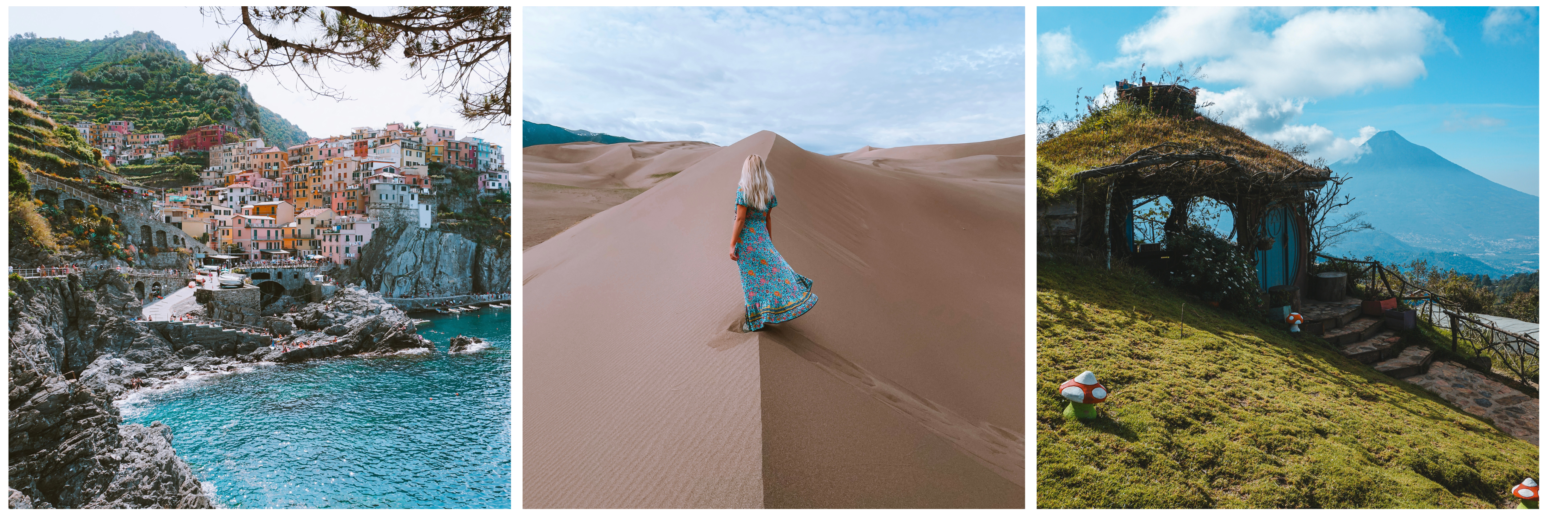Mount Everest is the highest mountain in the world at 29,029 ft. It is one of the most dangerous pursuits in the world, yet thousands of people have risked their lives trying to summit it. I have always been fascinated with Mount Everest; it reminds me of how beautiful yet unforgiving Mother Nature can be. However, summiting Mount Everest is extremely dangerous, expensive, and too many inexperienced and unqualified climbers risk their lives and the lives of others when summiting. So instead of climbing Mount Everest, consider hiking to Everest Base Camp (EBC) at 17,598 ft and leave summiting to the professionals.
Hiking to Everest Base Camp is still a daunting feat but a much safer and more feasible option. I have always wanted to hike in the Himalayas, and of course, my fascination with Mount Everest made hiking to base camp a priority on my bucket list. After graduating in 2019, my boyfriend and I hiked to Everest Base Camp. It was one of the most exhilarating and challenging experiences in my life, and I want to share with you everything you need to know before planning your trip.
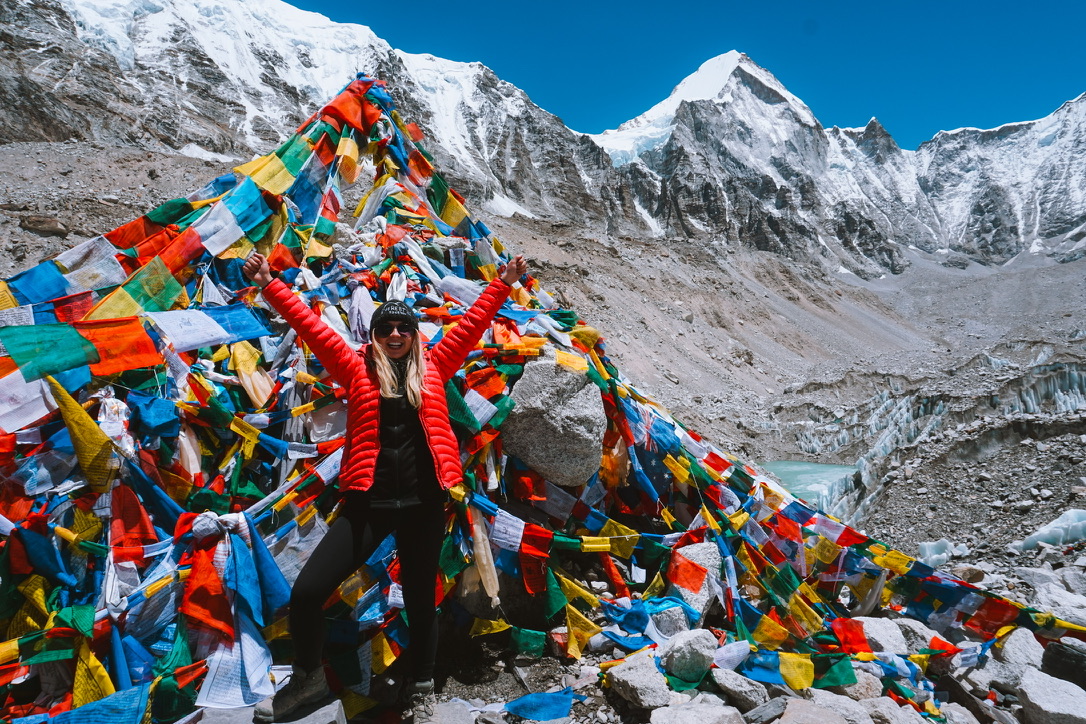
IMPORTANT THINGS TO KNOW:
Booking the trek. You can do the trek alone or use a trekking company/guide. We decided to use a trekking company because we weren’t familiar with the region and wanted to increase our chances of completing the trek. We used Bookmundi to find a trekking company – we liked this resource because we could read reviews to ensure we were booking with a reputable company. The trekking company we went with took care of our accommodations and meals, making easier for us to focus on the hike.
Best time to visit. The best time to visit EBC is in the Spring or Fall between March-May and October-November. During these time frames, you can expect reasonable temperatures during the day (50-70’s), clear skies, and little rain. We went in mid-May and had great weather, with rain only on our final day.
Doctor. Visit a doctor before the trip to get altitude sickness pills (Diamox) and other necessary vaccinations.
Training. During the trek, you will walk on an incline for 5-10 hours a day, carry a backpack, and hike at a higher altitude. You will need a lot of cardio endurance for the long days of hiking and strength to carry your pack. Watch your nutrition and work on your cardio and strength training 2-3x a week for a few months before the trek. Remember, the better prepared you are for the trek, the more enjoyable it will be.
Where to stay. Most trips to Everest Base Camp start in Kathmandu, the capital of Nepal. I recommend staying in Thamel, a visitor-friendly area, and if you forget anything before the trek, you should be able to find what you need in the street markets. I highly suggest adding buffer days in Kathmandu before and after the trip. Flights in and out of Lukla may be canceled/delayed due to weather conditions, so adding a few buffer days will prevent you from missing your flight out of Nepal and give you time to explore Kathmandu.
Hire a Porter. Unless you are confident you can carry a 30+ pound bag for miles uphill at elevation, I highly recommend getting a porter. Porters are the superheroes behind this trek, and often, they are 10x faster than you. Hiring a porter will make your trek much more enjoyable, and you are also supporting the local workers. Make sure to tip your porter!
Water. You must drink a lot of water during the trek to stay hydrated (especially if you are taking Diamox). Bottled water gets progressively more expensive as you hike to EBC, starting at $1 to $5 near base camp. Water purification tablets are a cheap alternative to buying bottled water. Be sure to read the side effects of the water purification tablets.
Food. Due to the remoteness of the Everest region, all food is carried up from village to village unrefrigerated. Most meals are made up of non-perishable ingredients, with grains being a staple. I refrained from eating meat on the trek to EBC because during transportation the meat could be left out without refrigeration for days at a time. Be sure to eat foods you know will sit well with you – you do not want to get sick during the long hike and risk not making it to the top.
Bathrooms. There are very few Western-style toilets on the trek, and there are mainly squatting toilets. I always carried tissue paper and hand sanitizer/wet wipes because these products are not always provided.
Showers. Everything gets more expensive the higher up you are, and showering is no different ($4-8). Eventually, on our trek it got “too cold to shower” and the bed & breakfast lodges did not have hot water, so take advantage of the showers when you can.
Charging. At most tea houses, you will have to pay for charging or if you purchase something you can use the chargers. It usually costs around $1-2/hour.
COST
- The official currency is the Nepalese rupee (currently 132 rupees to 1 USD). ATMs are unreliable in the Everest region so bring money from ATMs in Kathmandu.
- Booking through a local trekking company cost us roughly $1000 per person. This included food and accommodation in the Everest region, the flights to and from Lukla, entrance permits, airport pickup/drop-off, and our guide. We chose to do a tour with a small group and it was great to share the experience with other travelers. If you choose not to use a trekking company the total cost will be around $600-800. Keep in mind, these prices are from 2019 and could be at a higher rate now.
- You will also want to have some spending money along the way. You will stop in teahouses every day and might want to buy something extra to reward yourself for a long day of trekking. You can also get little souvenirs in the villages.
WHAT TO PACK:
Check out my Everest Packing List for everything you need. Packing for Everest Base Camp can be one of the most stressful things you have to do before the trek. Having the proper gear to stay comfortable and warm on the long trek is crucial. If you are on a budget, a lot of the gear can be bought cheaply in Kathmandu, but there are certain items that you definitely want to bring from home. I also added some things that you don’t need but are definitely nice to have 🙂
The essentials to bring from home
- Comfortable hiking boots
- Hiking socks
- T-shirts
- Tank tops
- Hiking pants
- Leggings
- Shorts
- Thin Puff Jacket
- Hat
- Buff
- Gloves
- Base layers
- Widemouth Water Bottle
- Backpack (Either more than 50L if not using a porter, or daypack if you have a porter)
- SPF
- Toiletries
- Hand Sanitizer
- Tissue
- Rain Jacket
- Rain Pants
- Undergarments and Sports Bra
- Trekking Poles
- Tennis Shoes
- Sunglasses
- Headlamps
- Water Purification Tablets
Nice things to have
- Vitamin-C Drinks
- Liquid IV
- Wet Wipes
- Duct Tape
- Deck of cards
- First Aid Kit
- Chocolate
- Trail Mix
- Granola Bars
- Electronics
- Phone & charger
- Camera/GoPro and charger
- Headphones
- Universal charging adapter
If you take a guided tour they will likely provide you with some of the trekking gear. Our tour provided a sleeping bag, large jacket, and large duffle bag for our porter, but if you do not do a guided tour you can get these fairly cheap in Kathmandu. Depending on if you get a porter or not, you will either carry all of your gear and need a large 50+ liter backpack, or if you have a porter you will carry a smaller daypack. We opted to use the porter and I am very thankful we did. If you are worried about the length or difficulty of the trip, hiring a porter will be extremely helpful.
SUMMARY OF THE ROUTE:
Most Everest Base Camp treks are between 11-15 days, depending on how many acclimation days you want to have. In general, the more acclimation days you have the better you will feel while trekking and will help prevent you from getting altitude sickness. My boyfriend and I did a 12-day trek which was perfect for us; the route is outlined below:
Day 1: Kathmandu – Lukla – Phakding
We woke up at 4AM to take a shuttle to the airport to make our flight to Lukla. We boarded a small plane and flew through the beautiful Himalayas for roughly 30 minutes. Lukla Airport is considered the most dangerous airport in the world which made me pretty nervous on the short flight. Fortunately, we landed safely and started our trek. From Lukla, we had an easy hike to Phakding that was mostly flat or slightly downhill.
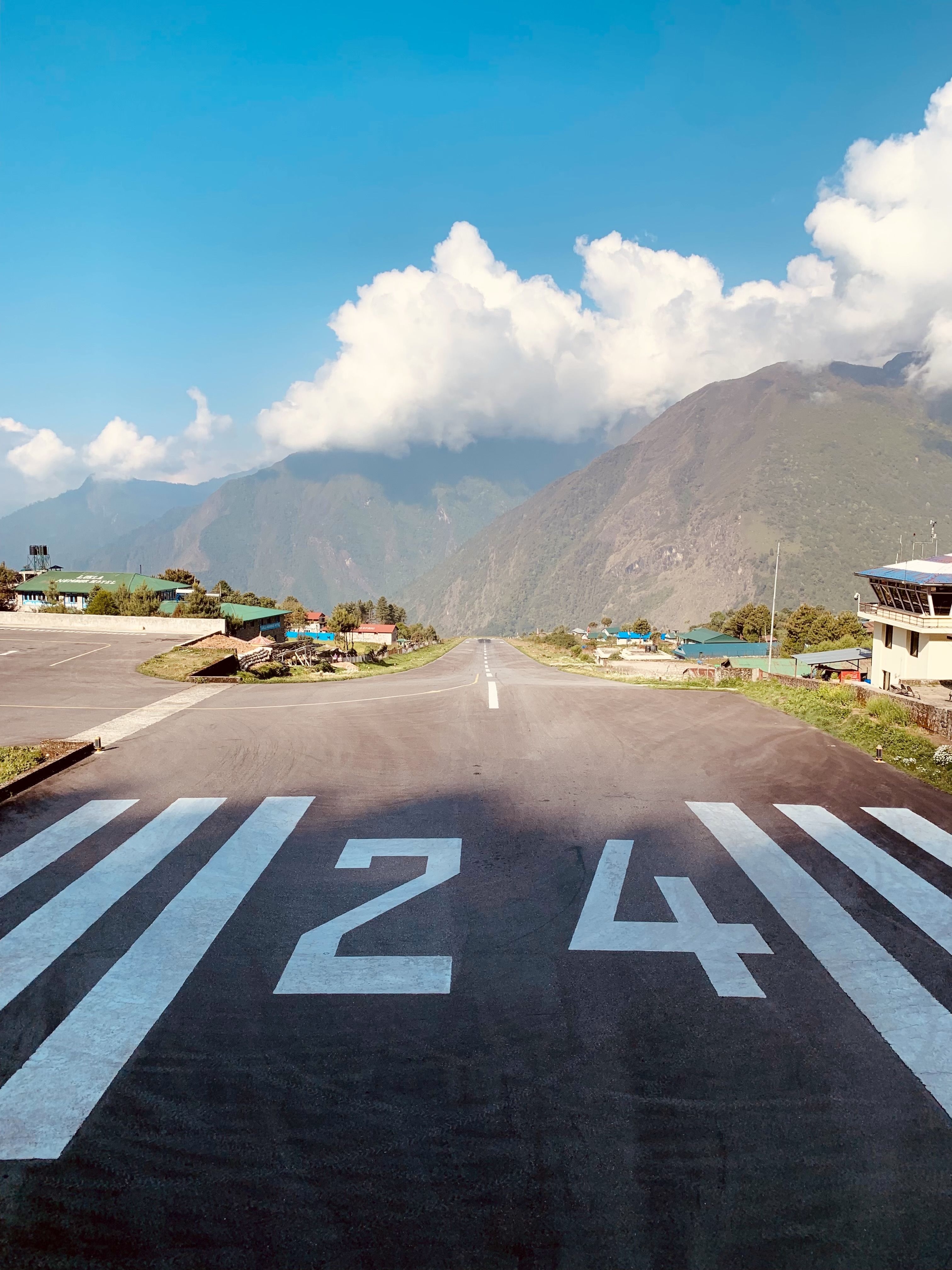
Day 2: Phakding – Namche Bazaar
From Phakding it is an extremely long and difficult hike to Namche Bazaar. We crossed multiple suspension bridges and the majority of the hike is along steep uphill trails. This day was extremely challenging but so rewarding to arrive in the beautiful village, Namche Bazaar.
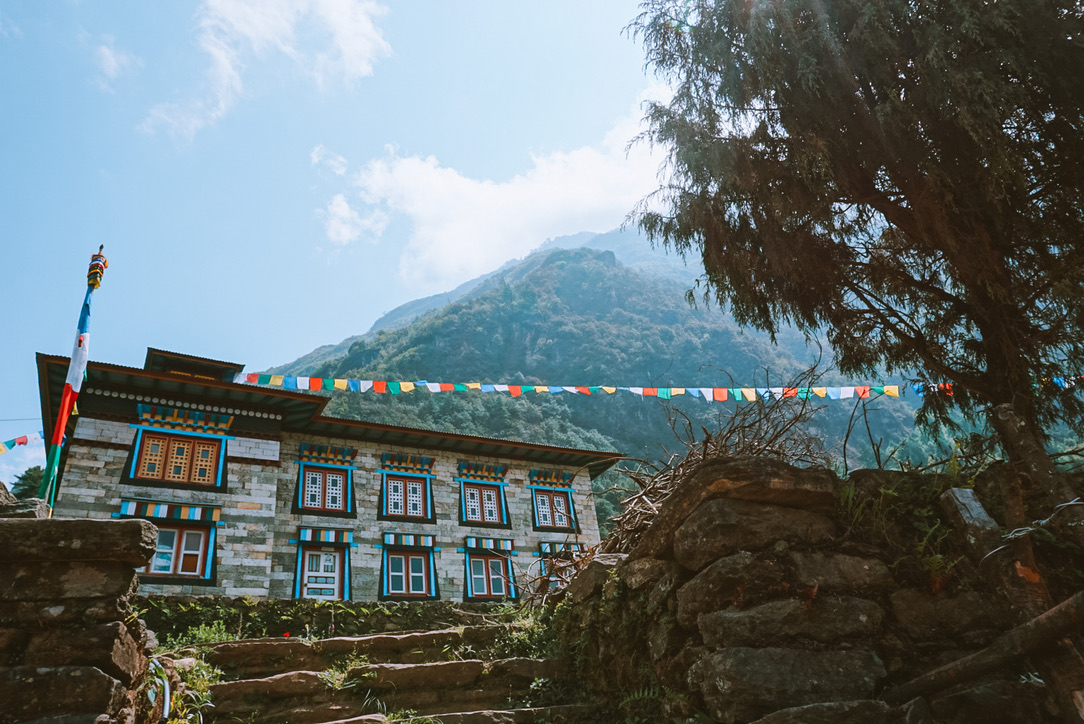

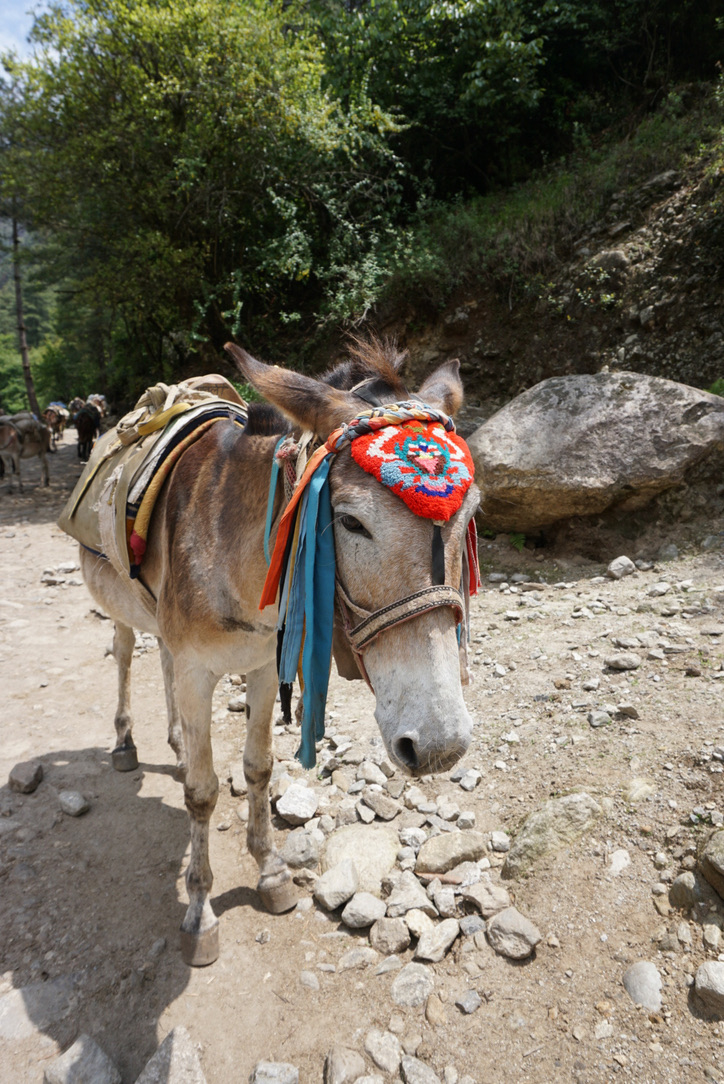
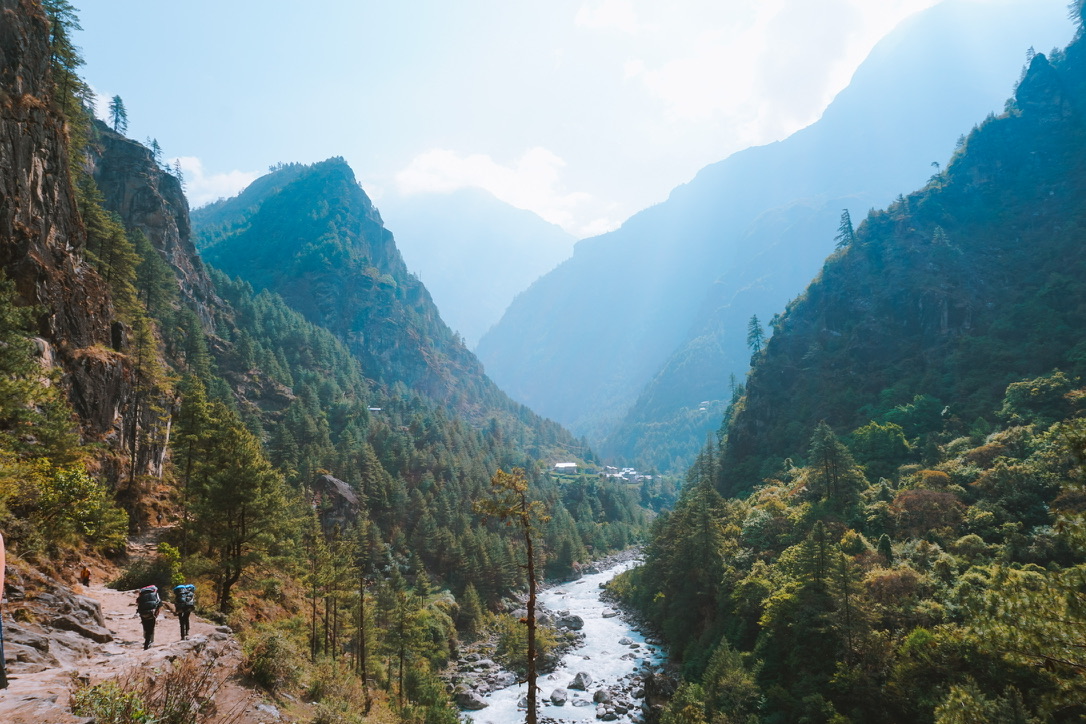
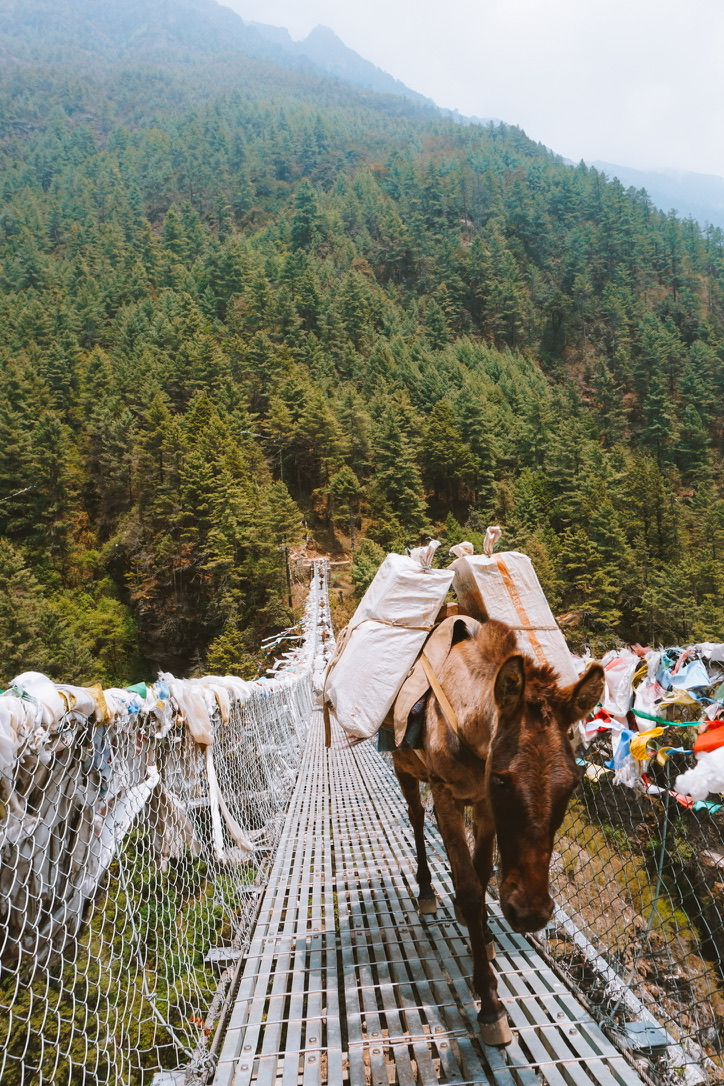

Day 3: Namche Bazaar Acclimatization Day
We took this day to acclimatize at 11,286 ft and explore Namche Bazaar. This was my favorite village along the trek as it had a lot of cute cafes/shops and the most spectacular view of the mountains. There were optional hikes during the day, so my group hiked to the Everest View Hotel where we were able to see Everest for the first time!

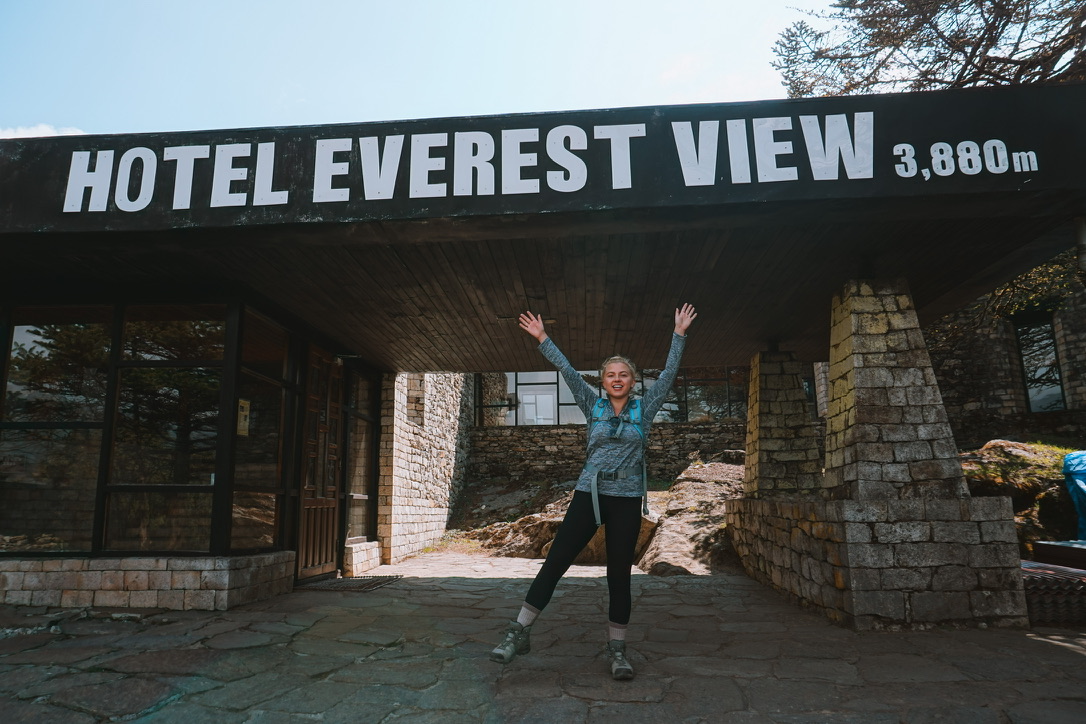

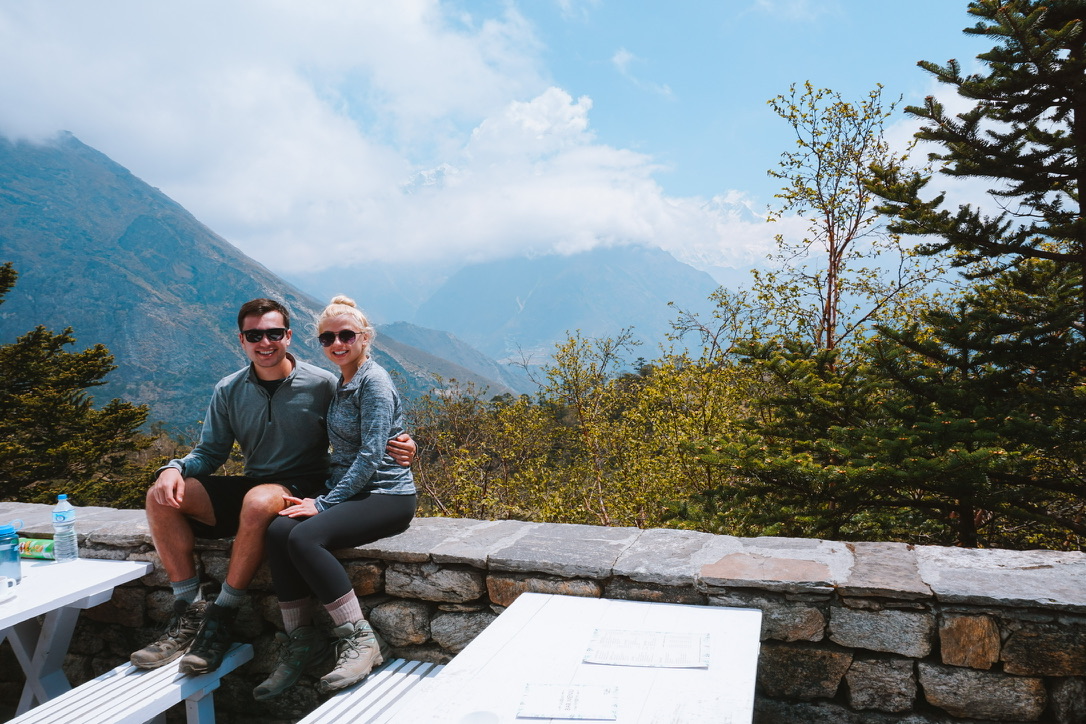
Day 4: Namche – Pangboche
The hike from Namche Bazaar to Pangboche was long and fairly steep. On our way to Pangboche, we made a stop at the Tengboche Monastery, which is the most important monastery in the region.

Day 5: Pangboche – Dingboche
We enjoyed a short and easy hike to Dingboche while taking in magnificent views of Everest, Amadablam, and Nuptse mountains.

Day 6: Dingboche Acclimatization Day
In the morning, we had a short but steep hike to a ridge where we had an incredible view of the expansive mountain range. After our hike, we took this day to acclimatize at 14,468 ft while exploring the quaint village of Dingboche. We loved Cafe 4410 and watched the movie “Everest” with our new friends. We made sure to go to bed extra early to get more sleep because we were exhausted.
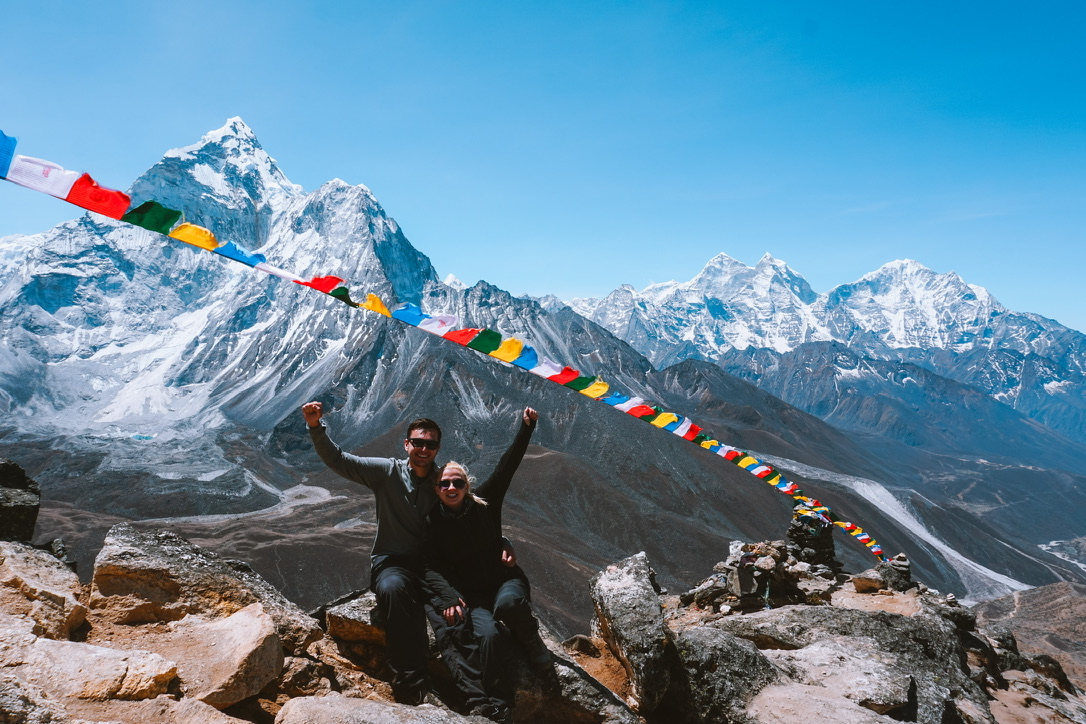
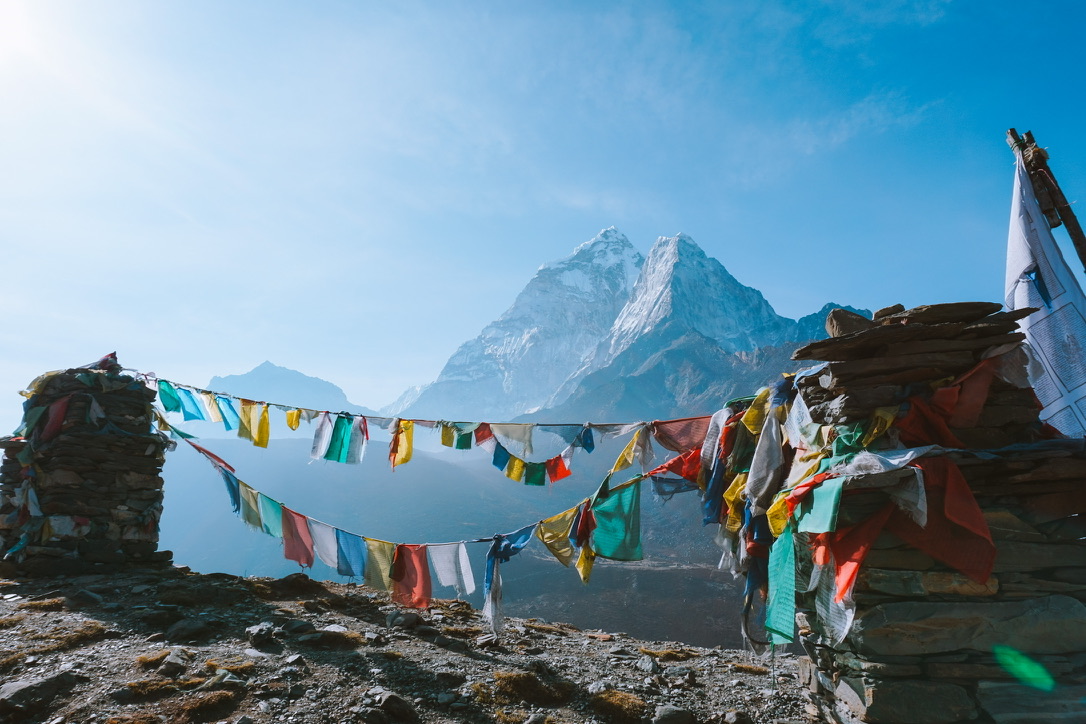
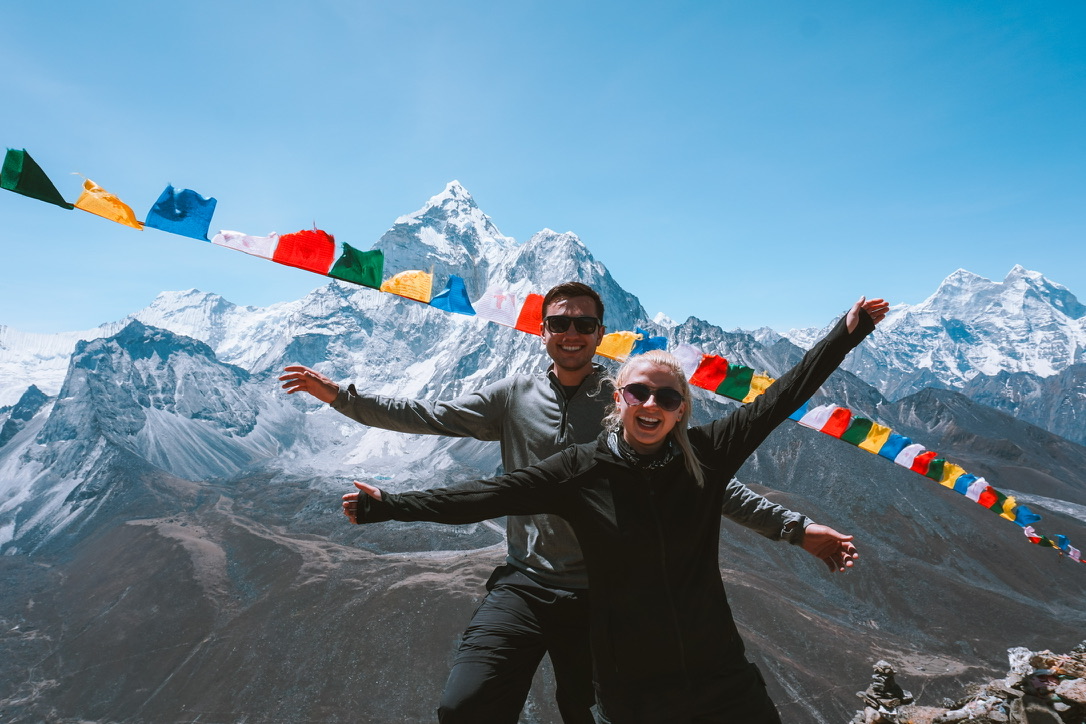
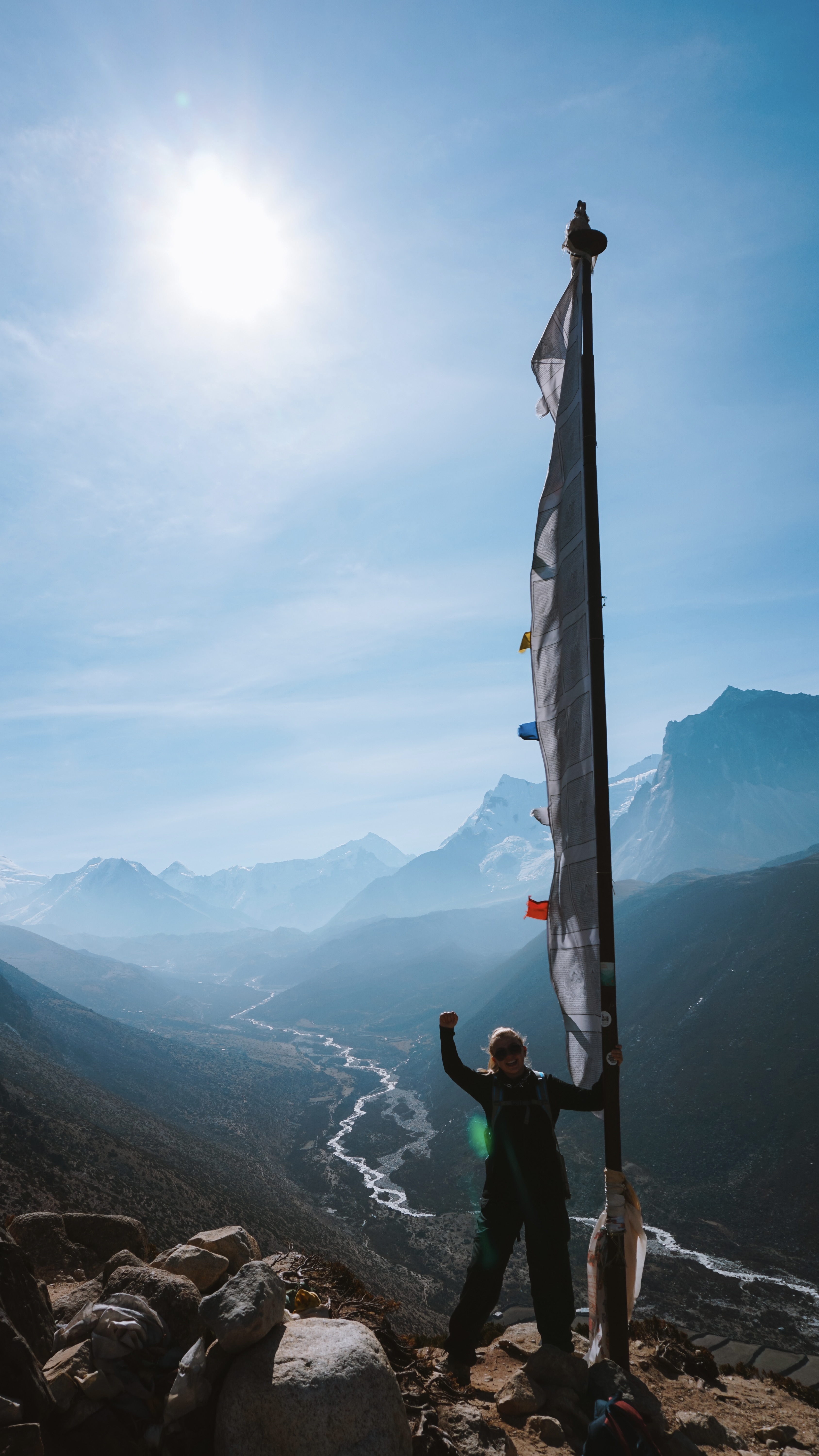
Day 7: Dingboche – Lobuche
On our hike to Lobuche, we noticed the altitude started to affect us a lot more during our steep climb. Along the way, we stopped at the Mount Everest Memorial where famous mountaineers such as Scott Fischer, Rob Hall, and Babu Sherpa were paid tribute with prayer flags and memorial stones. By this point of the trek, the nights started to become very cold and the higher altitude made it difficult to sleep.
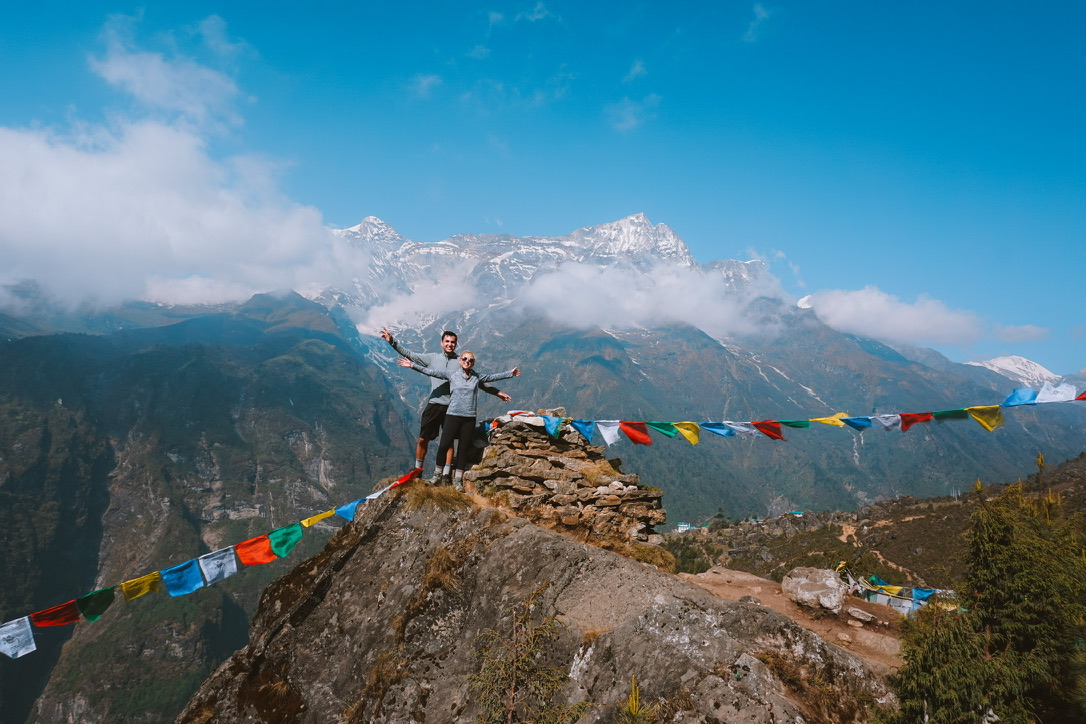
Day 8: Lobuche – Gorashep – Everest Base Camp – Gorashep
The day we had been planning and dreaming of for months was finally here as we hiked to Everest Base Camp in the middle of the Khumbu Glacier. The hike was short but difficult due to the high altitude but the excitement pushed us to reach our destination. It was such a surreal feeling to make it to Everest Base Camp at 17,598 ft. While we were there we took a lot of photos, admired the summit of Everest in the distance, celebrated our accomplishment, and then returned to Gorashep. Once we made it back to Gorashep, we played card games with our new friends and rewarded ourselves with a KitKat and Coca-Cola. This was the highest elevation we stayed at during the trek and we barely slept due to the high altitude and bitterly cold night.
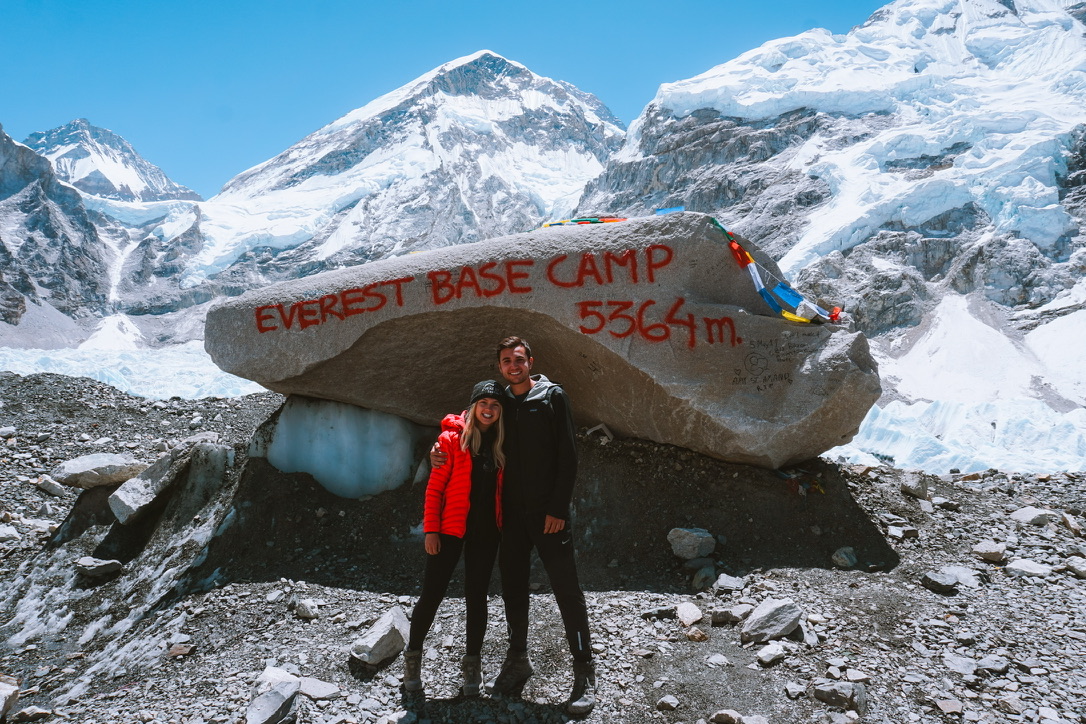
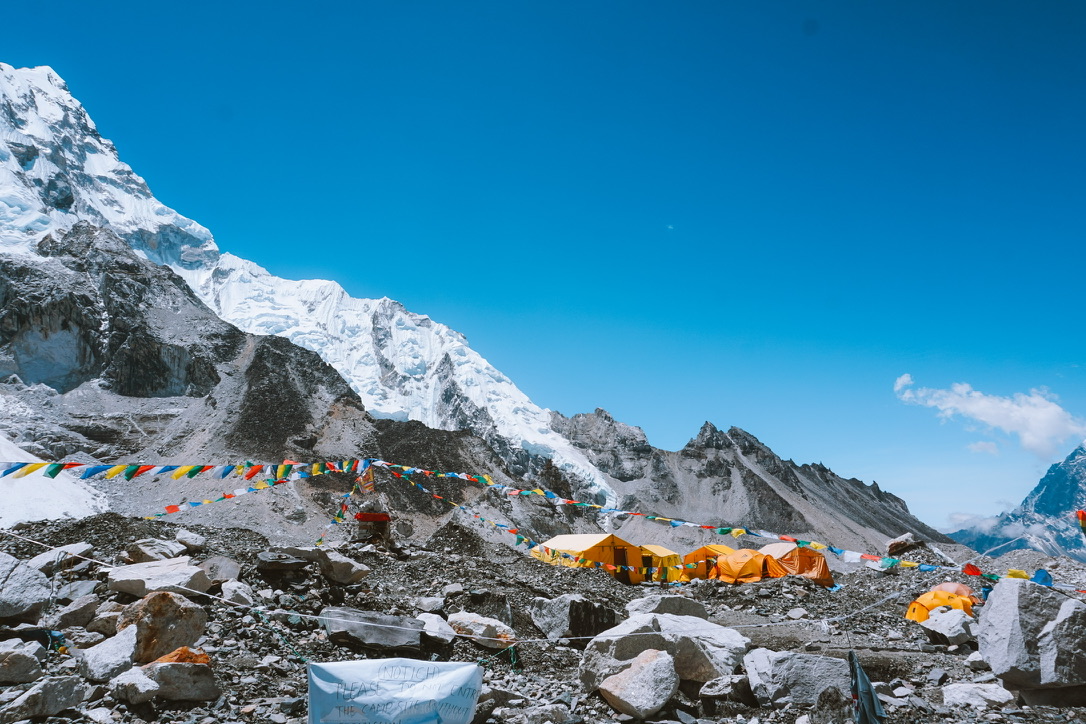

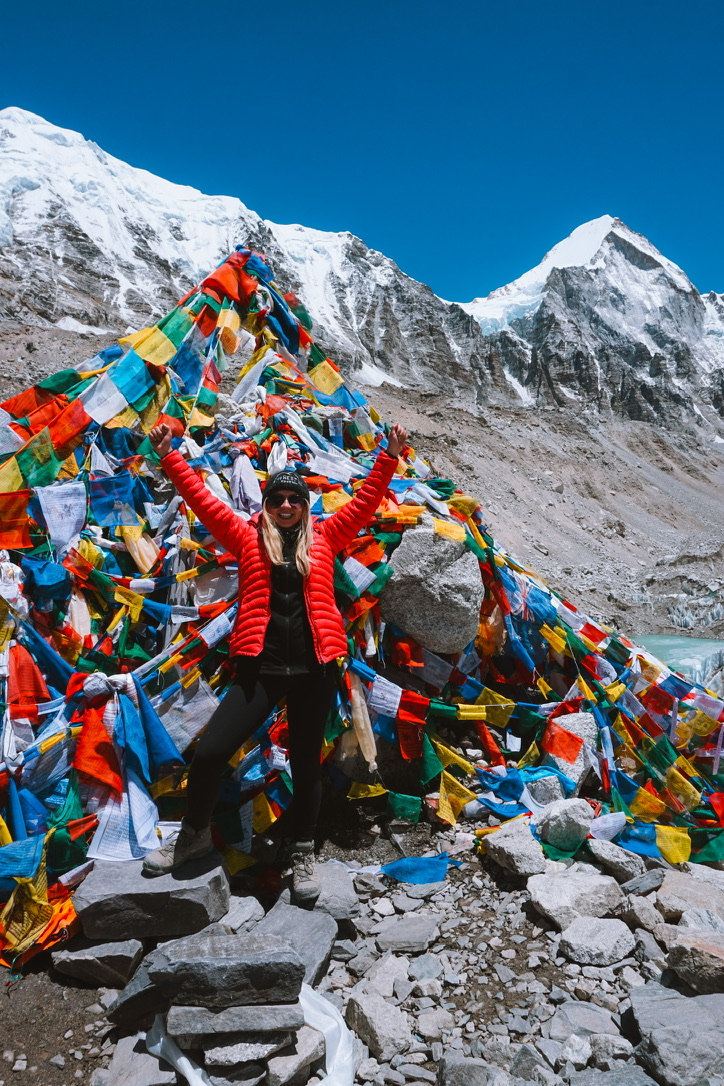

Day 9: Gorashep – Pangboche
We started our descent and we quickly noticed our bodies feeling better from decreasing in elevation. The days hiking down are long but were much easier on our bodies.
Day 10: Pangboche – Namche Bazaar
We continued downhill until we reached Namche Bazaar. To celebrate our successful trek to base camp, we headed to the world’s highest Irish pub with friends we’d made along the journey. We drank “Everest” beers and got tipsy quickly from the altitude.
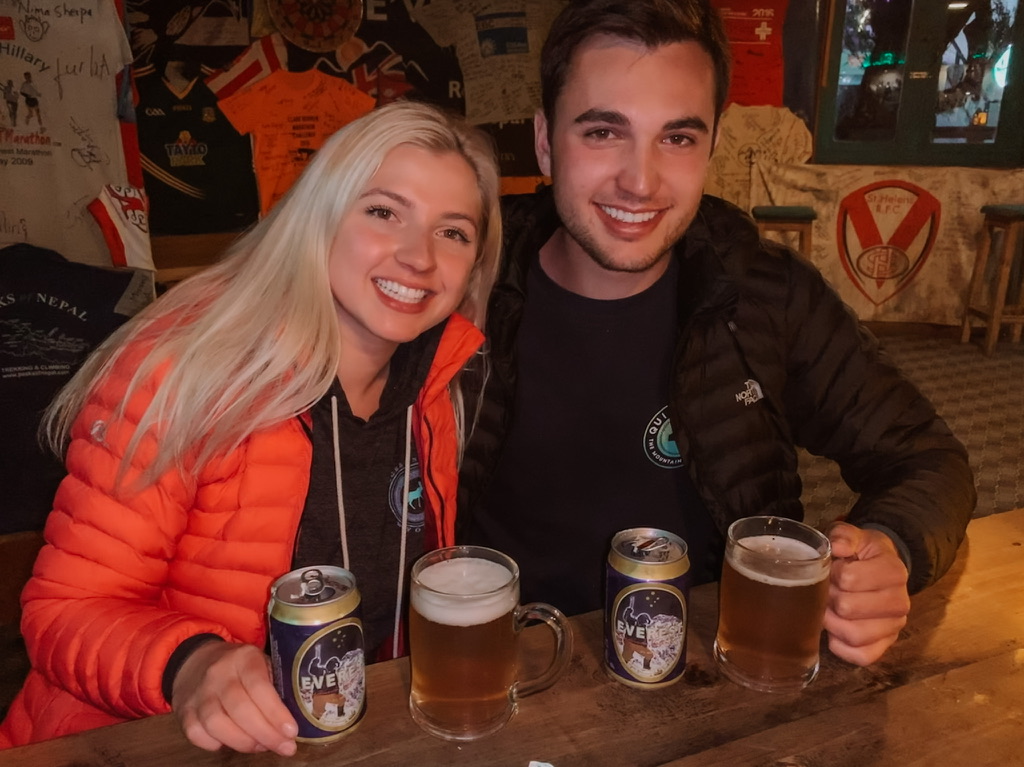

Day 11: Namche – Lukla
A little hungover from the night before, we woke up to a 14-mile hike ahead of us. Although it was a long hike, we knew this was our last day walking and we could finally rest at the end. We made it to Lukla and spent the night there with hopes to catch a flight back to Kathmandu in the morning if the weather permitted.
Day 12: Lukla – Kathmandu
Luckily, our flight was on schedule and the weather conditions were good so we were able to catch our flight to Kathmandu. Once we landed, we had a shuttle drive us back to our hotel where we showered, washed our clothes, and caught up on some much-needed sleep.
CONCLUSION
12 Days. Over 100 miles trekked. 17,589 ft. Hiking to Mount Everest Base Camp was an absolutely breathtaking experience (literally & figuratively). We made countless memories and new friendships along the way. There are no words that can describe the feeling of making it to base camp. It was truly an unforgettable experience and I highly recommend adding this to your bucket list.
Be sure to check out my my Everest Base Camp Pinterest board for more inspo, and check out my other blogs for more travel recommendations.
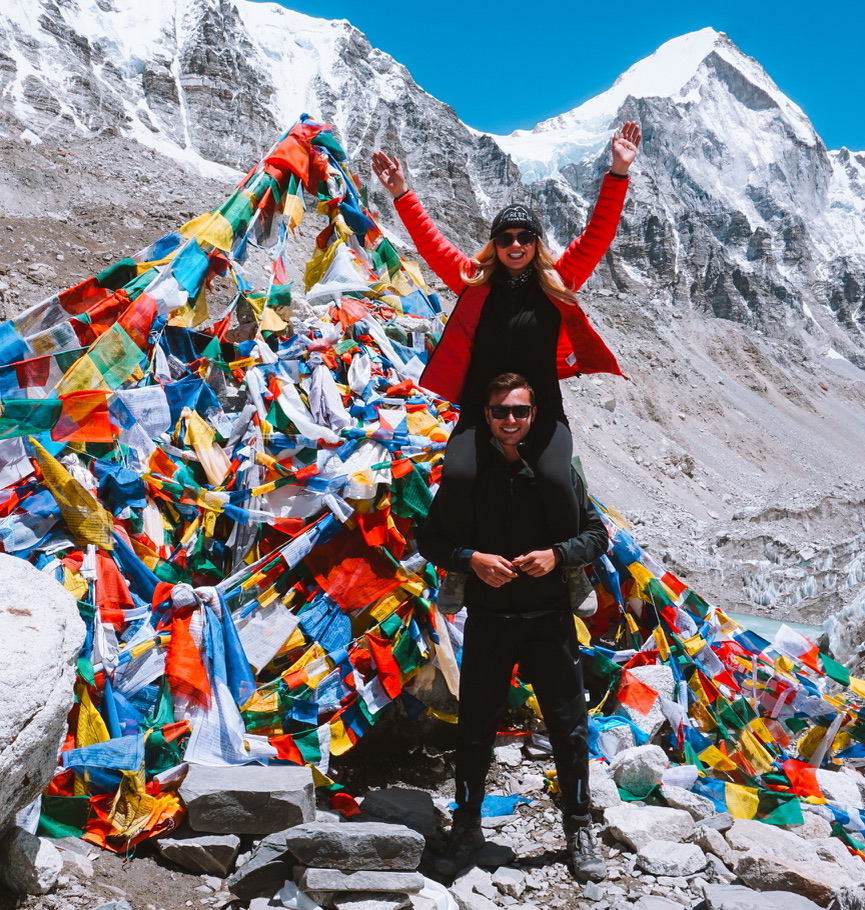
Disclaimer: This post includes affiliate links that are eligible for commission at no additional cost to you. These commissions help support the blog and the content I create.

